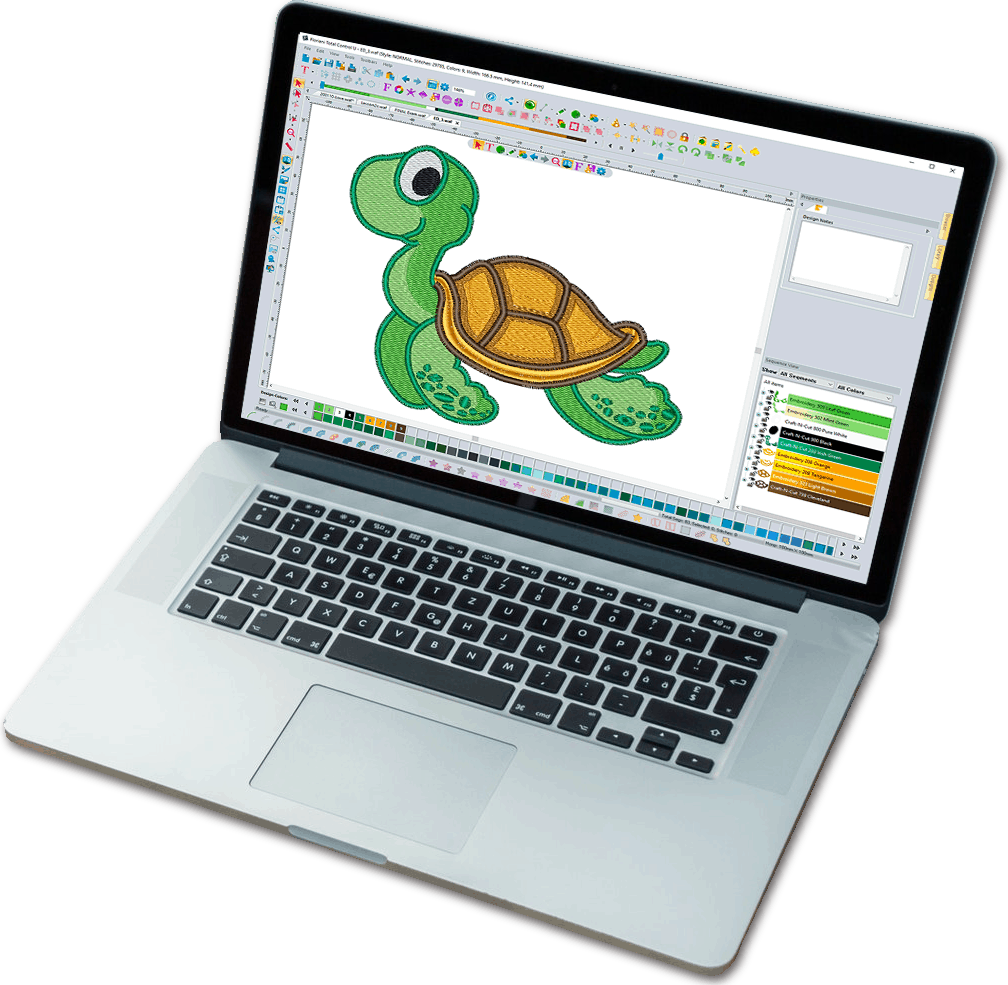Introduction
You’ve spent hours creating the perfect design, but when you stitch it out, the results look nothing like you imagined. Puckered fabric, broken threads, and distorted shapes can turn your embroidery dreams into frustration. The secret to perfect stitches? Proper Digitizing Embroidery.
Whether you’re using auto-digitizing software or working with professional digitizers, this guide will show you:
✔ The exact step-by-step digitizing process professionals use
✔ How to avoid the 5 most common digitizing mistakes
✔ Free and paid tools that deliver great results
✔ Pro tips for different fabrics and design types
By the end, you’ll be creating embroidery files that stitch out perfectly—whether you’re making gifts, selling products, or branding uniforms.
The Digitizing Process: Step by Step
1. Start with the Right Artwork
Best file types:
- Vector (AI, EPS, SVG) for clean edges
- High-res PNG (300+ DPI) with transparent background
Prepare your design by:
- Simplifying complex elements
- Removing backgrounds
- Converting text to outlines
Pro Tip: Use the “Posterize” effect in Photoshop to reduce colors before digitizing.
2. Choose Your Digitizing Method
Option 1: Auto-Digitizing Software
- Best for simple designs
- Fast but limited control
- Try: Ink/Stitch (free) or Hatch Embroidery
Option 2: Manual Digitizing
- Complete control over every stitch
- Time-consuming but professional results
- Requires software like Wilcom or Pulse
Option 3: Professional Digitizing Service
- Ideal for complex designs
- Costs $20-$100 per design
- Best for business branding
3. Assign Stitch Types
The Big Three:
- Satin Stitches
- For borders and text
- Ideal width: 1-4mm
- Fill Stitches
- For large solid areas
- Adjust angle for visual interest
- Running Stitches
- Fine details and outlines
- Use for delicate elements
4. Set Technical Parameters
Must-Adjust Settings:
- Density: 4-6 stitches/mm for most fabrics
- Underlay: Zigzag for stretch fabrics
- Pull Compensation: +5-15% depending on material
- Stitch Sequence: Group by color to minimize jumps
5. Test and Refine
The Quality Checklist:
✔ Stitch on scrap fabric first
✔ Check for puckering or gaps
✔ Verify thread tension
✔ Confirm colors match
5 Common Digitizing Mistakes (And How to Fix Them)
1. Too Much Detail
Problem: Tiny elements disappear when stitched
Fix: Simplify designs to key features
2. Ignoring Fabric Type
Problem: Perfect on denim but pucks on knits
Fix: Create separate files for different materials
3. Poor Stitch Direction
Problem: Uneven shiny appearance
Fix: Use consistent 30° or 60° angles
4. Skipping Underlay
Problem: Stitches sink into fabric
Fix: Always add appropriate underlay
5. Not Testing
Problem: Ruining final project fabric
Fix: Always stitch samples first
Digitizing Different Design Types
Logos
- Simplify small text
- Use satin stitches for crisp edges
- Add pull compensation
Text
- Minimum height: 0.4″ (1cm)
- Bold fonts work best
- Avoid cursive below 0.6″
Photos/Complex Art
- Reduce to 3-6 colors
- Use fill stitches with varied angles
- Add texture with stitch direction
Free vs Paid Digitizing Tools
| Feature | Free Tools | Paid Software |
|---|---|---|
| Quality | Good | Excellent |
| Control | Limited | Full |
| Speed | Slow | Fast |
| Learning Curve | Steep | Moderate |
| Cost | $0 | $100-$1000 |
Best Free Option: Ink/Stitch with Inkscape
Best Paid Option: Hatch Embroidery
Pro Tips for Perfect Results
- The Light Test
Hold your test stitch up to light—you should see small gaps between stitches. - The 10% Rule
For stretch fabrics, reduce density by 10% and increase pull compensation. - The Corner Trick
Add an extra stitch at sharp corners to prevent rounding. - The Thread Saver
Group elements by color to minimize thread changes.
When to DIY vs Hire a Pro
DIY If:
- You enjoy technical challenges
- Have time to learn (20+ hours)
- Only need simple designs
Hire a Pro When:
- Branding is critical
- Working with complex artwork
- Need professional results fast
The Future of Digitizing
- AI-Assisted Tools that suggest optimal settings
- Augmented Reality Previews before stitching
- Automated Fabric Detection for perfect settings
Conclusion
Great embroidery starts with great digitizing. Remember:
✔ Start with clean, simple artwork
✔ Match stitch types to design elements
✔ Always test before final stitching
✔ Know when to call in professionals
Your next step? Pick one method (software or service), try a test design, and see the difference proper digitizing makes.
Have a digitizing tip we missed? Share your wisdom in the comments below!


